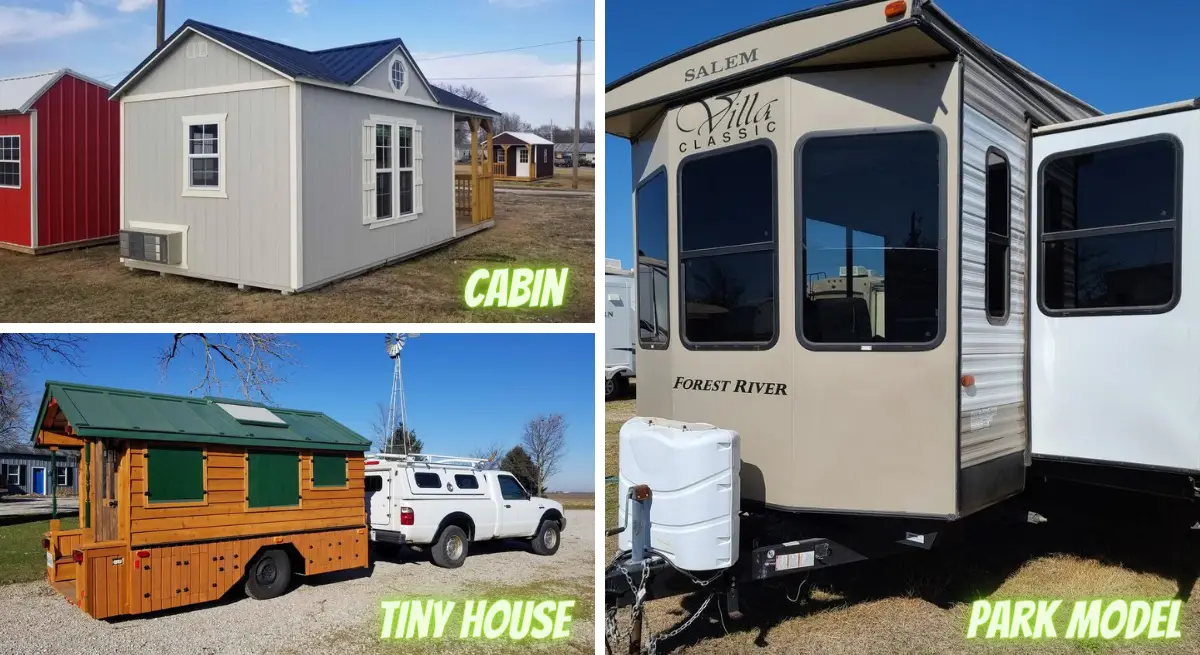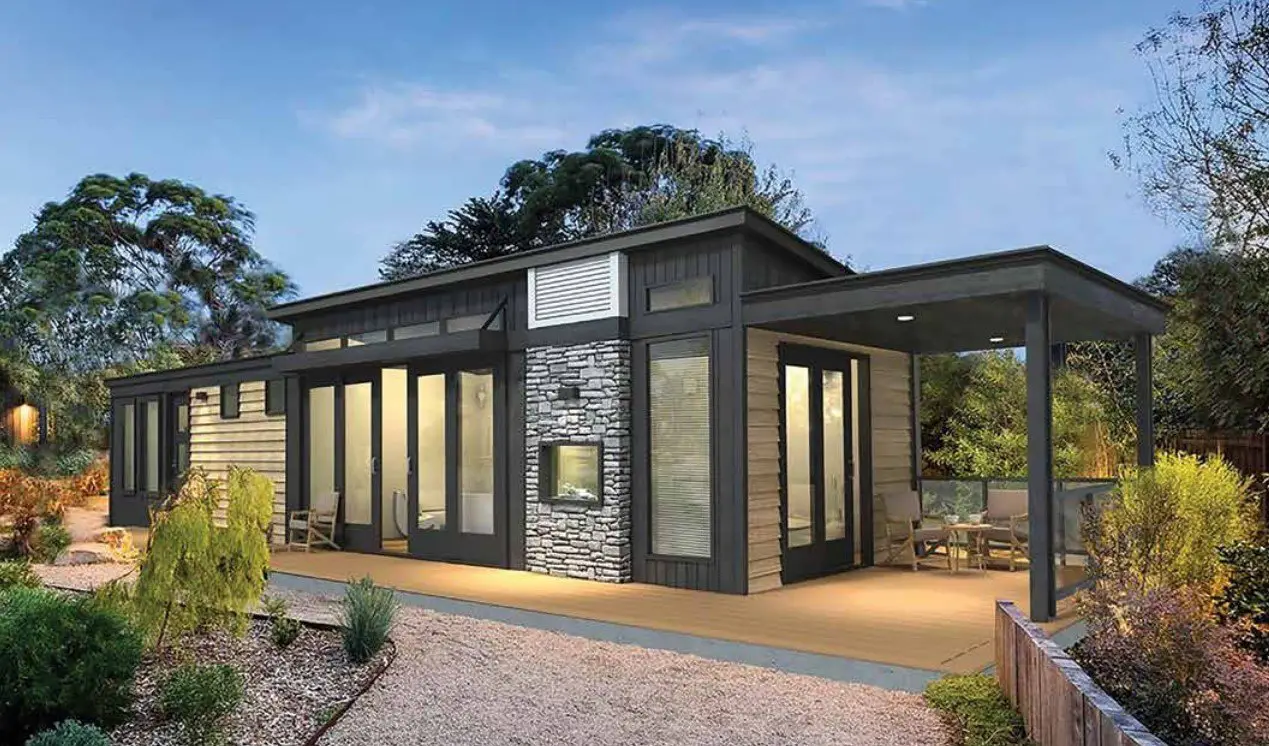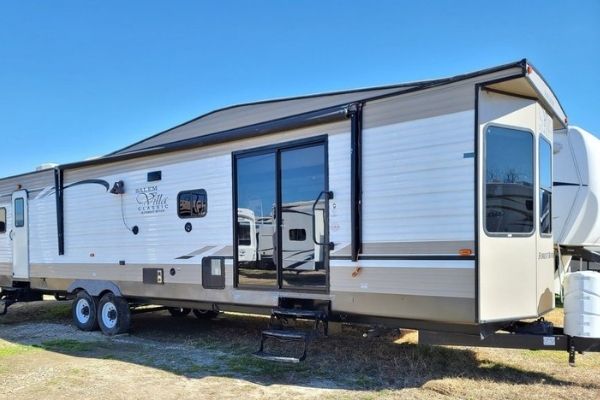
Cabins will need to have building plans, including all the required rooms. Tiny houses and park models don’t usually fall under the same building codes, but this will vary by state. Park models will need to have tags just like an RV. Tiny homes don’t need tags if they are built on a foundation. Park models can also be moved as they have wheels. Let’s look more into tiny homes, cabins, and park models and what makes them different, and how to try or start out living the tiny life.
What Is A Tiny House?
A tiny house is a home, sometimes on wheels, smaller than 400 square feet. There is no set rule for the sizing, but the standard is less than 100 to 400 square feet. Tiny homes can be built on trailers and moved around if they meet the required dimensions.
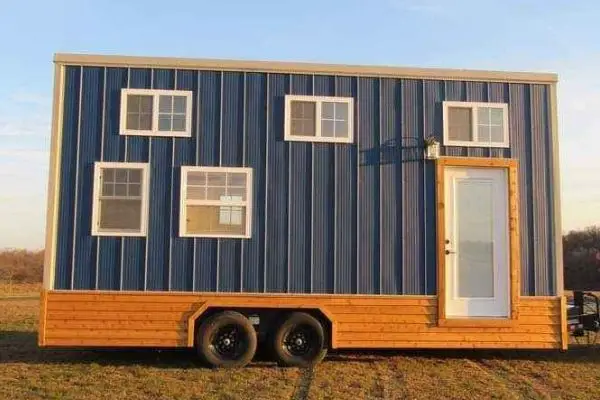
The maximum size of a tiny house with a trailer is 13.5 ft in height, 8.5 ft in width, and 40 ft in length. Tiny homes can also have two stories like typical houses. They can also have expandable rooms similar to those found in RVs, making them easier to tow. One floor is ideal if you plan to tow your tiny house, as two will likely make it too tall to tow.
A tiny house will weigh between 3,00 and 13,000 pounds, depending on the size and materials used in the construction. They offer an escape from a traditional full-sized home for those who prefer a minimalistic lifestyle.
The cost of a tiny house is also significantly less than that of a typical home. Tiny homes can cost, on average, from $10,000 to $40,000 and beyond, making them more cost-effective than traditional homes. Tiny houses will usually come with a loft for sleeping, a living area, a minimalist kitchen, and a bathroom. Some will have outdoor bathrooms with a composting toilet and rainwater shower if the owner lives off the grid.
Comparing the size of a tiny home to a regular home can give you a good idea of just how small they can be. Considering an average size of 100 to 400 square feet for a tiny home, they are only 20% or less the size of a typical home. 2,261 square feet was the average size for a single-family home in 2020.
What Is A Park Model RV?
According to the RV Industry Association, a park model is a towable RV built on a single trailer chassis with an area no larger than 400 square feet that are typically used for vacations and camping. They are more permanent than RVs and are connected to the power grid and utilities in a recreational vehicle park.

Park model RVs are ideal as semi-permanent homes, vacation homes, and rental properties. Park model RVs have all the home features, including a bathroom, kitchen, living room, and bedroom. These rooms will be scaled down but not quite as small as an RV.
Park models are about the same size or larger than a tiny home, but the difference lies in the mobility feature. Tiny homes aren’t required to be movable, while park models need to be on wheels. Unlike tiny homes, park model RVs must comply with ANSI housing standards. To ensure these standards are met, each park model RV must have the RVIA seal displayed on the outside.
What Is A Tiny Cabin?
Unlike the uncertainty of whether or not a tiny house needs wheels or not, a tiny cabin is a permanent structure that is subject to local housing laws and will need utility hookups. Unlike RVs, a tiny cabin will need to have plans drawn up and approved like a traditional home. Tiny cabins or mini cabins can be lived in permanently. Still, they are most common as a small alternative to a large vacation cabin.
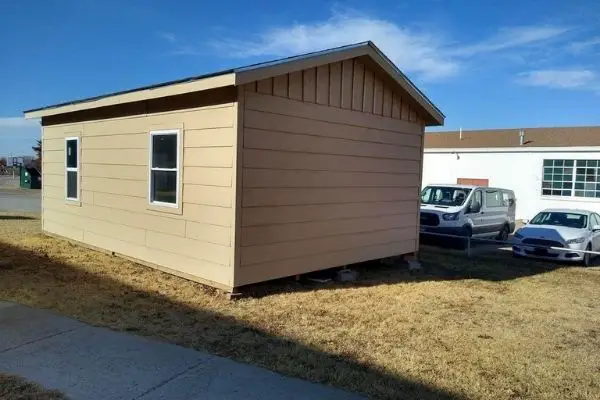
Tiny cabins will need to be connected to the local power, water, and sewer services unless plans for an off-the-grid style have been approved. The advantage of being on a permanent foundation makes tiny cabins a good place for downsizers to start if they want to test the minimalistic lifestyle.
Is Downsizing A Trend Or A Fad?
The idea of downsizing has been around for many years, meaning it is more of a trend than a fad. It has become more popular as of late due to the many financial and mental benefits of downsizing.
Downsizing can be a great financial move to save money. Tiny homes and park model RVs cost less to maintain due to the smaller footprint. They are also far less expensive than traditional homes to build, and they provide all the same rooms on a smaller scale. Downsizing helps lead a minimalistic life with only an essential amount of living space, promoting outdoor living.
How To Test Out Tiny Living?
For those who want a taste of tiny living before going all in, renting a park model RV, tiny house, or tiny cabin can give you the tiny living experience without the uncertainty. Tiny houses and cabins can be rented via a vacation home renting app like Airbnb.
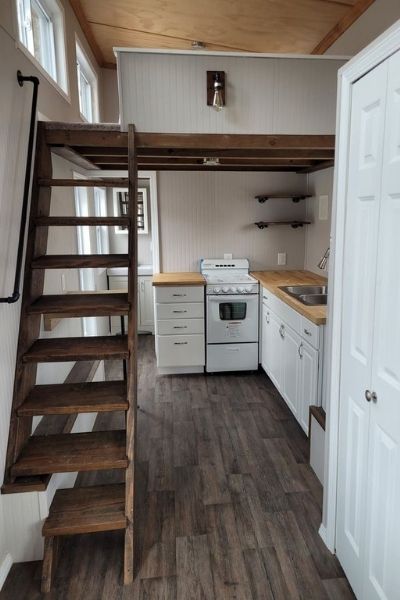
Another option is buying a small and inexpensive kit and building it in your backyard. This will give you a good idea of the size without being confined to it. The same can be said for renting an RV. Some people will look at built tiny houses to get an idea of how small they really can be. It is easy to find tiny home builders and sellers online who are happy to let you take a look.
Camping can also be a great test. You can buy a tent with separate rooms to get a feel for the living conditions. This is also an excellent way to test out cooking smaller meals and spending a lot of time outside.
Is Community Living Part-Time Or Full Time?
Living in a community can be part-time or full-time, depending on the park and your needs. Some parks are only for park model RVs because they aren’t part of a vehicle.
There are numerous advantages to living in a community full-time, including access to the amenities offered by the park, like wi-fi, cable, fitness centers, and pools. Stable hookups for water, gas, and electricity might be provided along with sewer services.
Communities also offer a place for those who live on the road most of the year, an opportunity to socialize with other RVs or stay in one location for a few months.
Where Do You Start?
Once you have officially decided to give the tiny life ago, the first thing you should do is decide the type of tiny domicile you want to live in and where you want to live. It is essential to look into the laws and codes of the area to ensure that the home you choose is legal.
Once you have selected a home and location, you will need to downsize. Organize your belongings into the essentials, the items you want to keep in storage, and the items to sell or donate. This can help you get a good idea of how much stuff you find essential. If it is more than will fit in your tiny home, consider putting more in storage, reworking your tiny house’s layout, or rethinking the lifestyle change.
Once you have everything in order, make the move. Most people who choose the tiny life find it rewarding, financially and mentally.

